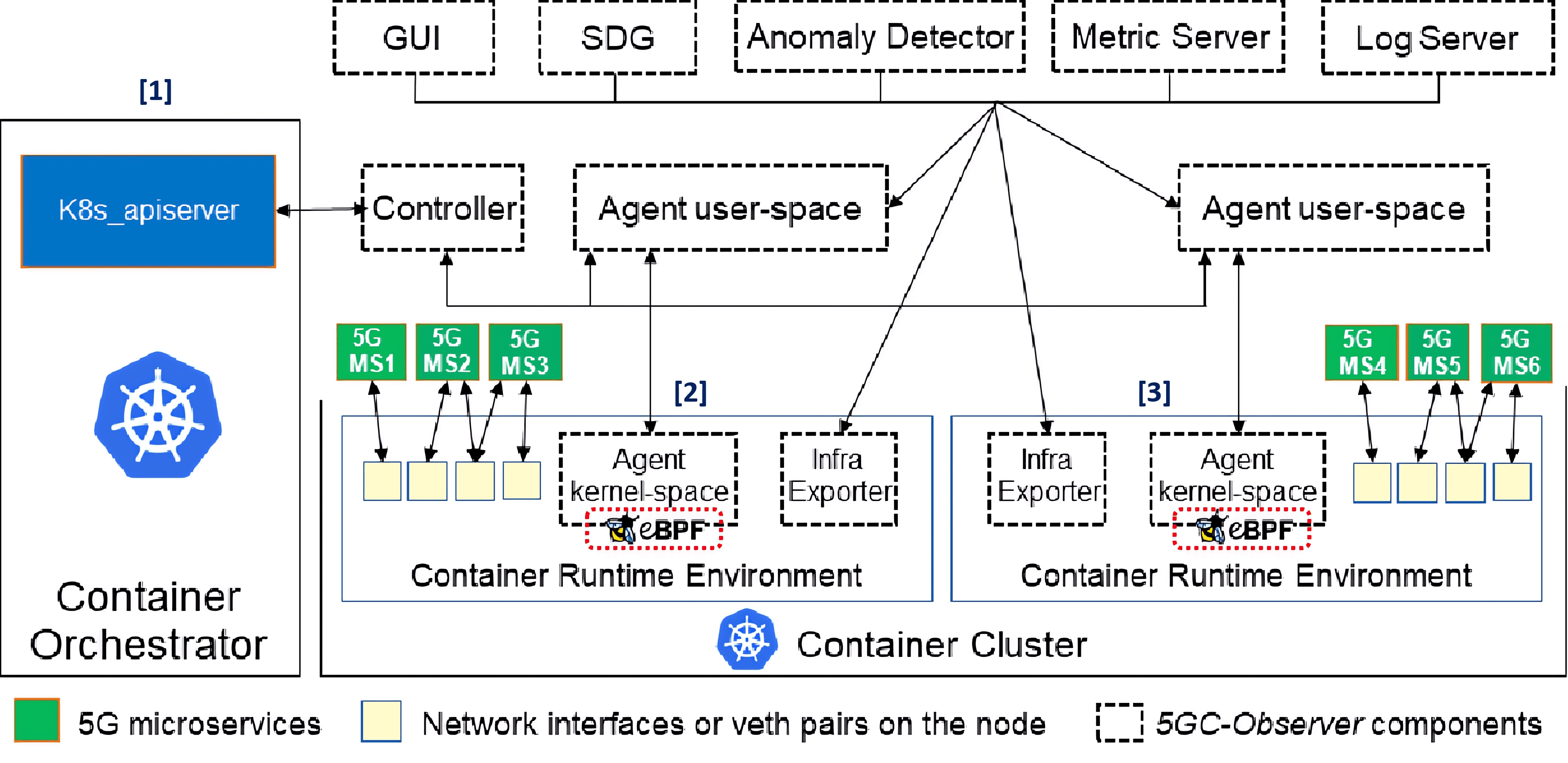Effective Network Management for Cloud-Native 5G Networks with eBPF
Note
Author: LEE KUN LIN
Date: 2024/02/21
Introduction
With the rapid development of 5G technology in recent years, the demand for high-performance networks has increased. Therefore, a new technology has emerged that decomposes traditional telecommunications network services into a group or multiple independent, reusable, and elastic microservices (lightweight network functions), called CNF (Cloud native Network Function). Currently, telecommunications operators have begun to accelerate the adoption of cloud-native technologies. In addition to valuing their self-healing capabilities, they also hope that microservice architectures can accelerate and promote the development of new network services, while also providing a high level of granularity.
However, the increasing complexity of microservices begets a challenge to traditional network performance monitoring solutions. First, the rapid development of microservices makes the utilization and maintenance of tracing frameworks increasingly burdensome. Second, microservices increase the complexity of network maintenance and create more blind spots on the network level. Therefore, it is becoming increasingly important to build new low-cost tracing frameworks and increase the observability of cloud-native 5G networks.
This blog article will share the framework for effective network management proposed by Abderaouf KHICHANE, a PhD candidate at Orange Labs and Université Paris-Saclay, and his team.
Description

Dr. Abderaouf's Team Proposed 5GC-Observer as a Non-Intrusive Observability Framework for Cloud-Native 5G Network Services. The framework utilizes eBPF technology to observe the 5G core network and generate rich telemetry data, which can be used for real 5G end-users’ QoS degradation detection.
- [1, 2, 3] Dr. Abderaouf made use of a Kubernetes cluster composed of 3 nodes. As shown in the figure above, there is 1 master node as the control plane [1], and 2 worker nodes as the data plane [2, 3].
- In addition, they setup a VM having access to the Kubernetes cluster is dedicated to the simulation of UEs to ensure the E2E 5G workflow.
Here is a brief explanation of the different parts of the figure above (We would not explain the components in detail. Please refer to the team's paper for more information.):
Controller: It is used to discover the 5G microservices and their networks by periodically interacting with the Kubernetes API. it can also retrieve for each Kubernetes Pod belonging to the 5G network service, such as its name, the high level Kubernetes resources managing it, its network interfaces, and their IP addresses, etc. And it is communicated to the 5GC-Observer’s Agent using a Kubernetes Custom Resource (CR).
Agent: As shown in the figure above, the agents use the eBPF technology to monitor network traffic between 5G microservices. The agents are deployed on Kubernetes worker nodes and runs in privileged mode. And because of the utilization of eBPF, their solution is agnostic to the observed 5G core network and allows to retrieve rich telemetry data without having to know or access the source code of 5G CNFs.
Log Server: They utilize ”Grafana Loki” as a log aggregation system, allowing to collect, store and expose logs with HTTP API.
Anomaly Detector: It is responsible for detecting anomalies in critical metrics stored in the Metric Server, including service level metrics (reported by the Agent) and system level metrics (reported by the Infra Exporter). They Proposed “Zscore“ as critical metrics for quantifying the distance between a point and the average of the dataset in function of the standard deviation. The formula of is as follow:
Where the “sd(m, W)” is the standard deviation of metric m over a sliding time window W.
Anomaly alerts would be triggered once the value of “Zscore“ is higher than a threshold χ. They set W and χ to 10 minutes and 2 respectively.
Their goals for the new framework are as follow:
1.Collect enough and rich telemetry data.
2.Use the acquired metrics to accurately detect anomalies.
Conclusion
- Dr. Abderaouf's team proposed the "5GC-Observer" framework and successfully used the eBPF technology to observe telemetry data generated by the 5G core network.
- In fact, the team used a chaos engineering tool that consists in simulating network delay. They also proposed a statistically-based anomaly detection solution that can efficiently detect network performance degradation, while their proposed "5GC-Observer" framework can effectively detect performance degradation phenomena.
- This article focuses on introducing the "5GC-Observer" framework, so the process of simulating network delay and detection would not be described in detail.
In the future, traditional telecommunications network services will move towards being decomposed into lightweight microservices. The observation of cloud-native 5G networks will become increasingly important. Therefore, this article introduces the achievements of Dr. Abderaouf's team and uses this article to briefly discuss eBPF observation technology. We will discuss eBPF technology in more detail in the future.
Reference
- *A Khichane, I. Fajjari, N. Aitsaadi, and M. Gueroui, “5GC-Observer: a Non-intrusive Observability Framework for Cloud Native 5G System” in NOMS 2023-2023 IEEE/IFIP Network Operations and Management Symposium, 2023.
- *Junxian Shen, Han Zhang, Yang Xiang, et al., “Network-Centric Distributed Tracing with DeepFlow:Troubleshooting Your Microservices in Zero Code” in Proceedings of the ACM SIGCOMM 2023 Conference
About
Hi There! Thank you for reading. I am LEE KUN LIN. I joined the free5GC team last summer and have been learning and growing with the team members and all of you who love the free5GC platform. This is my first article, sharing a framework from a team in France who are passionate about developing new 5G core network technologies. I hope you would derive some benefits from the content. There may be some shortcomings or errors in my article. If you have any questions, please feel free to contact me and share your thoughts.
Connect with Me
- Linkedin: www.linkedin.com/in/kunlin-lee-53b129282/
- Github: https://github.com/KunLee76
Note
If you are interested in supporting free5GC, we welcome your donation. Please visit this link for more details.